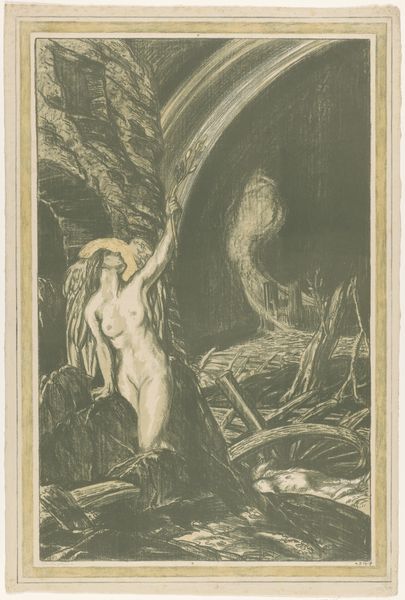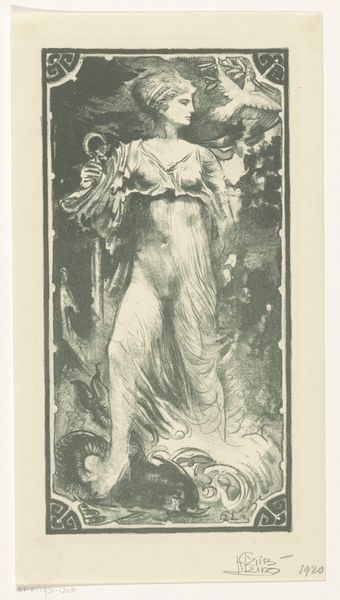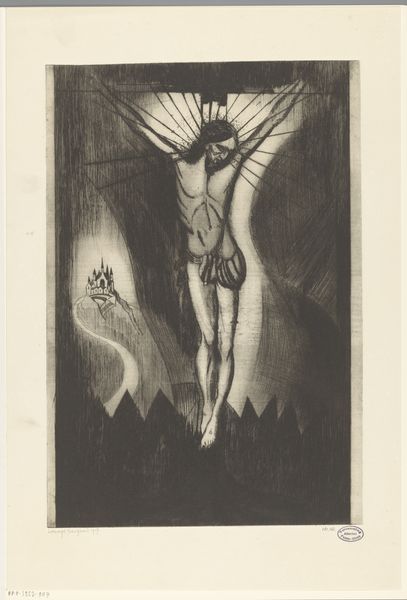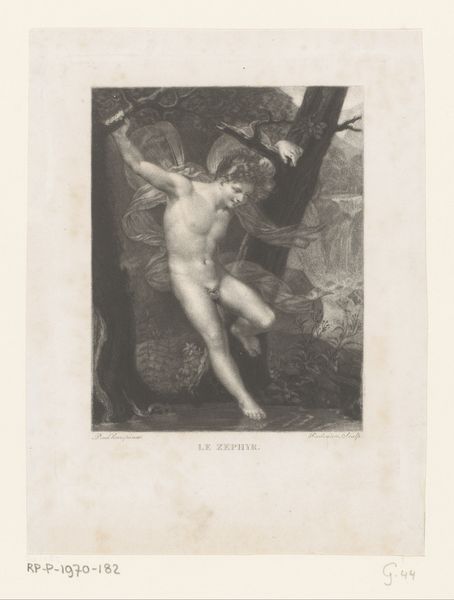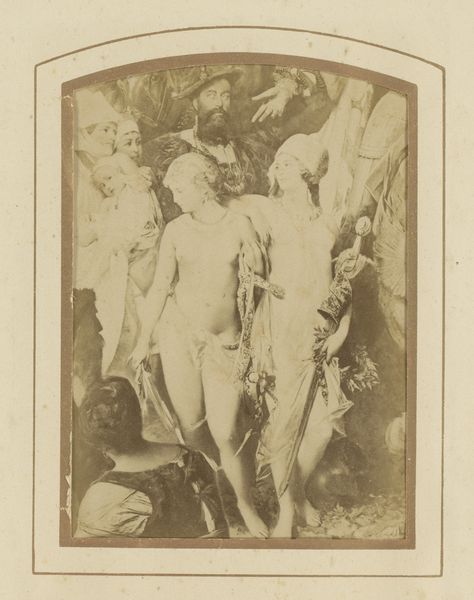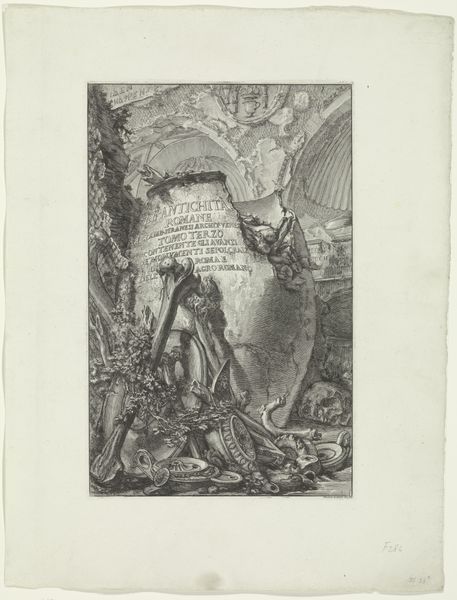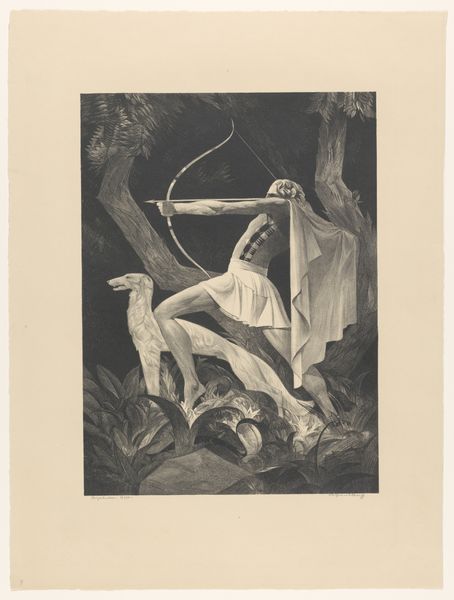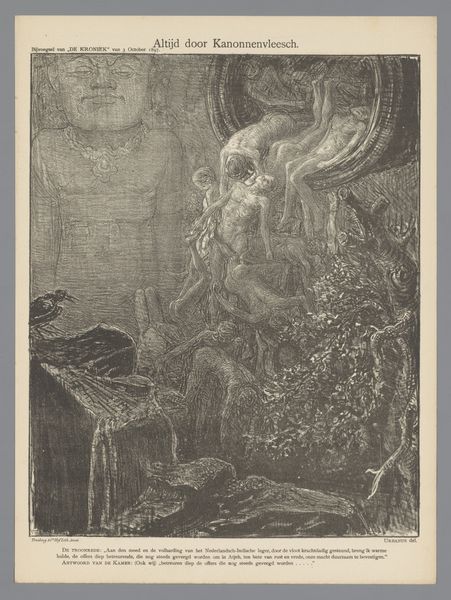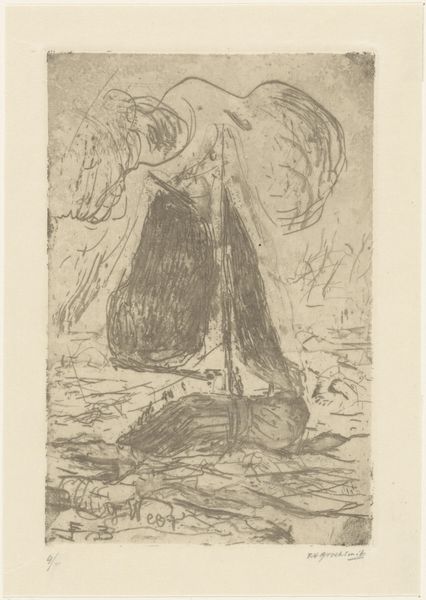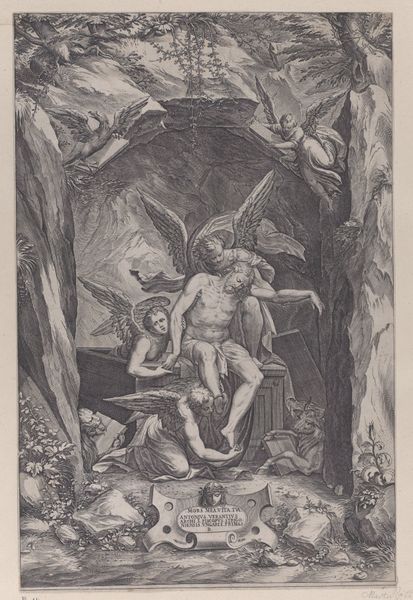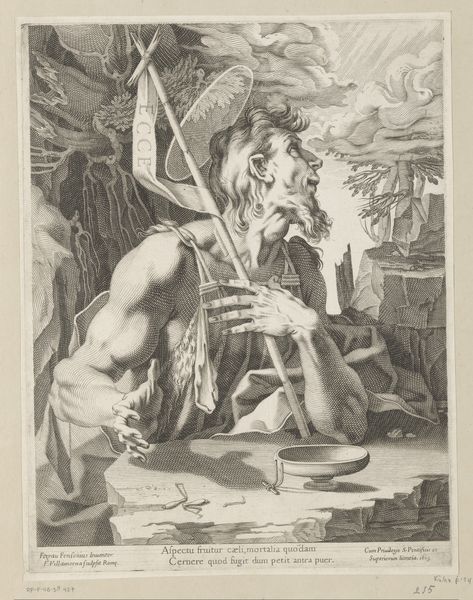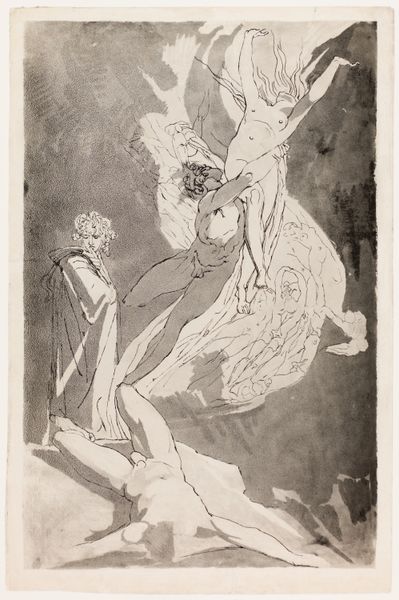
Dimensions: 446 × 307 mm (image); 489 × 347 mm (sheet)
Copyright: Public Domain
Editor: Right, next up is Charles Rambert’s “Usury” from 1851. It's an engraving, etching, lithograph – a real mix of printmaking techniques – and all on paper. There's this overwhelming sense of dread, a naked man seemingly trapped and preyed upon by a giant spider… what jumps out at you? Curator: What strikes me is Rambert’s pointed commentary on the socioeconomic realities of 19th-century France. “Usury” – excessive interest on loans – becomes a monstrous predator. The man is physically bound, but consider also the societal constraints. Who benefits from depicting this scene of exploitation and what statement is Rambert making about the institutions enabling it? Editor: That’s interesting, so you see it less as a personal torment and more as a symbol of systemic issues? Is the spider usury personified? Curator: Precisely! Romanticism often intertwined personal emotions with grand societal narratives. The spider embodies the cold, relentless machinery of debt. Think about who might have viewed this print. Was it intended to rally the working class? To shame lenders? These are the questions that reveal the true power of the image. Editor: It does seem to have a propagandistic intent, more than just a symbolic illustration. The title leaves little to the imagination! Is it common to frame this kind of economic critique within romanticism? Curator: Romanticism, with its focus on individual feeling and its critique of industrial society, frequently served as a vessel for social commentary. It allowed artists to depict raw emotions connected to those power imbalances in the society they were observing. Editor: Wow, framing it as a direct commentary shifts my perspective entirely. I was initially focused on the shock value, but understanding its social intent… that’s really powerful. Curator: Absolutely. Art doesn’t exist in a vacuum. Context transforms viewing! Editor: I will definitely keep an eye out for how artistic statements mirror, or rebel against, prevailing norms. Thanks for this discussion!
Comments
No comments
Be the first to comment and join the conversation on the ultimate creative platform.
